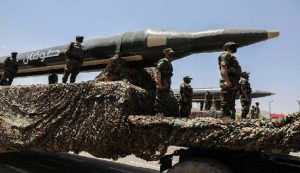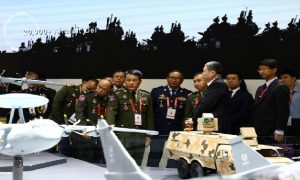23-02-2024
SINGAPORE: The use of anti-ship ballistic missiles (ASBMs) in the Red Sea has spurred interest in Asia about the systems used to shoot them down, experts and industry officials say – although China, with its huge ASBM arsenal, presents a tougher challenge.
 US Central Command (CENTCOM) media releases from Nov. 27, the world’s first documented use of an ASBM in combat to Feb. 20 mention a total of 48 ASBMs and 12 interceptions in the Red Sea. Those releases noted that many ASBMs fired by the Iran-aligned Yemeni Houthis posed no danger and were not engaged.
US Central Command (CENTCOM) media releases from Nov. 27, the world’s first documented use of an ASBM in combat to Feb. 20 mention a total of 48 ASBMs and 12 interceptions in the Red Sea. Those releases noted that many ASBMs fired by the Iran-aligned Yemeni Houthis posed no danger and were not engaged.
On the sidelines of the Singapore Airshow this week, a senior executive at a US defence contractor said the air defence activity in the Red Sea and in Ukraine had caught the attention of potential customers in Asia.
“What we’re seeing is demand increase for integrated air and missile defence here,” said the executive, who declined to be named because of the sensitivity of the matter. He said that included sensors to detect targets, the weapons to shoot them down and the command-and-control systems tying it all together.
Robert Hewson of Sweden’s Saab (SAABb.ST), opens new tab said at the air show that customers in Asia were now more interested in not just countering ballistic missiles, but also small, “low-end” aerial threats such as drones that have been launched in concert with larger attacks in the Red Sea.
“It turns out we can do this ballistic missile stuff,” Hewson said. “It costs a lot of money and shoots big expensive missiles, but it looks like it all works. What we’re not really able to do reliably is handle swarms of small threats that are coming at us at the same time.”
 CENTCOM said it did not have a complete tally of ASBMs fired, interceptions and interception attempts for public release. A US defence official said whenever ASBMs were in range of a Navy ship, they were engaged.
CENTCOM said it did not have a complete tally of ASBMs fired, interceptions and interception attempts for public release. A US defence official said whenever ASBMs were in range of a Navy ship, they were engaged.
US Navy destroyers are equipped with the Aegis air defence system, with components from Lockheed Martin (LMT.N), opens new tab, among others, which is designed to shoot down aircraft, cruise missiles and ballistic missiles.
Aegis uses RTX (RTX.N), opens new tab subsidiary Raytheon’s SM-2, SM-3 and SM-6 missiles to intercept threats. A Raytheon spokesperson declined to comment on whether the company had seen increased interest in missile defence systems since the Houthi attacks began. A Lockheed Martin spokesperson provided public information about increased production of certain systems.
A spokesperson for European defence conglomerate MBDA noted at the air show that the British government had awarded it a 400 million pound ($505 million) contract in January to upgrade its Sea Viper air defence system to handle ballistic missiles. (Int’l Monitoring Desk)
 Pressmediaofindia
Pressmediaofindia




